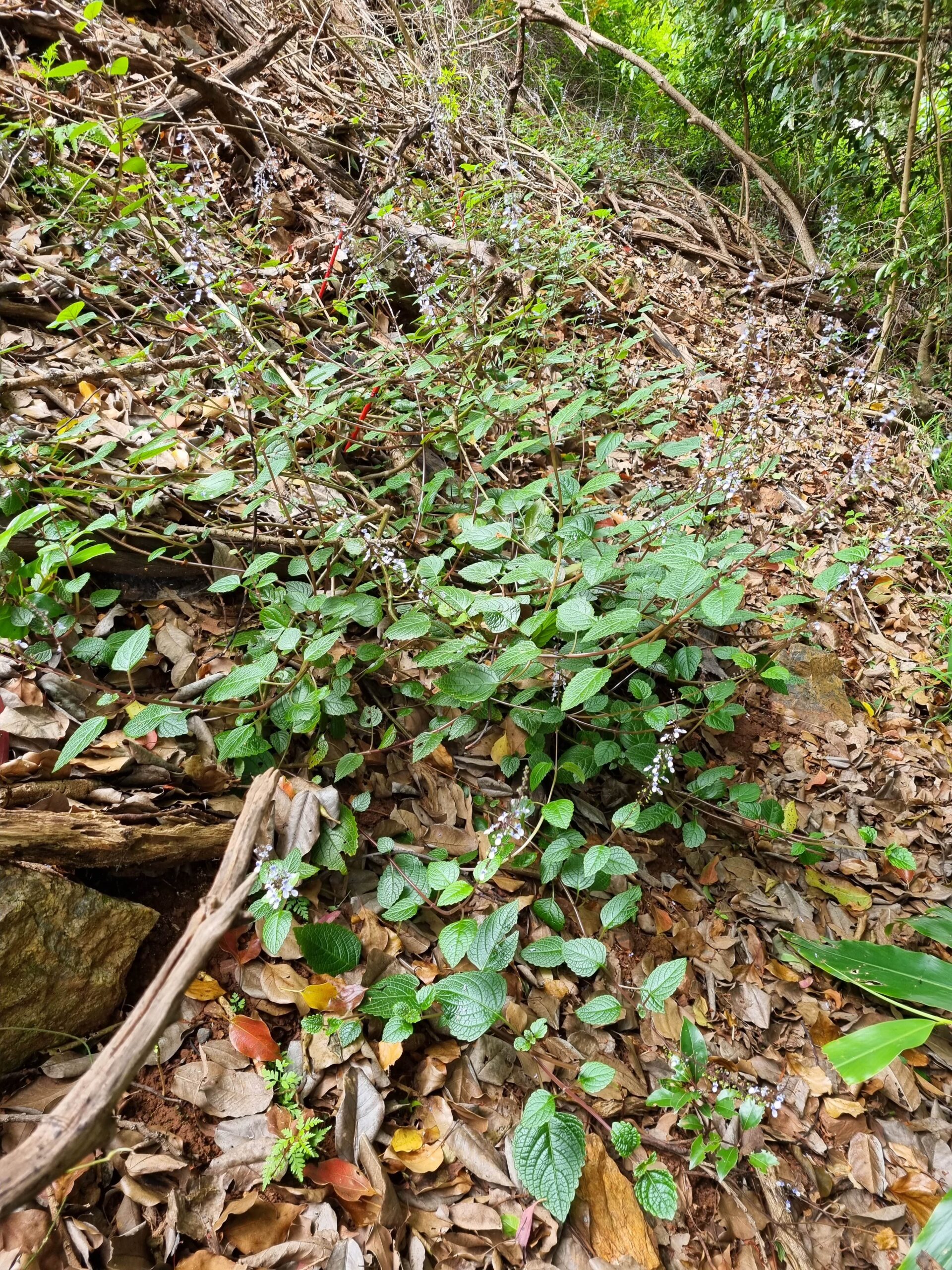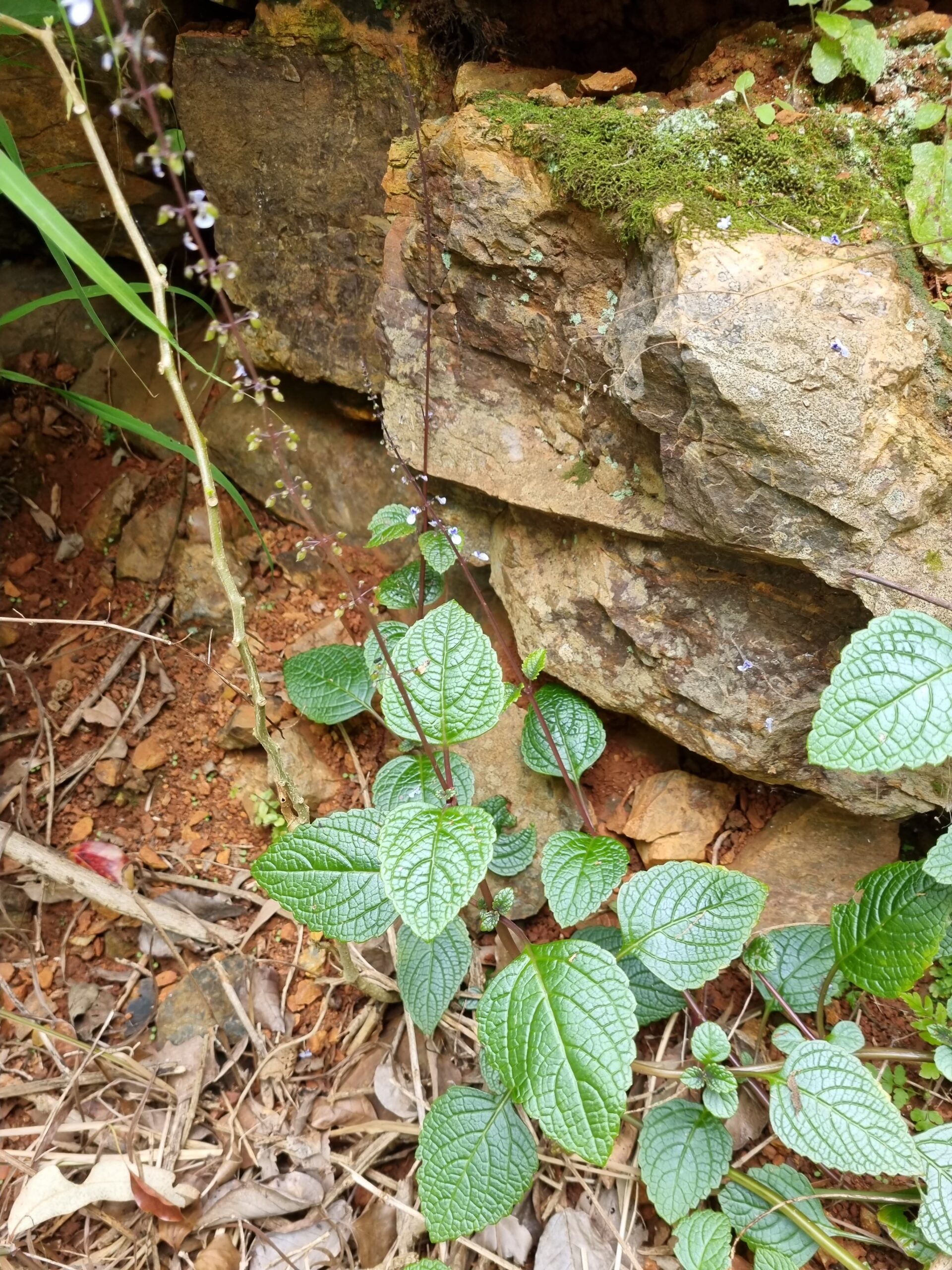When moving onto a bush block away from suburbia I always thought it would be easy to pick up bush restoration techniques and knowledge as I go. But the actual learning and growth I have received throughout my bush regeneration project was beyond anything I could have predicted.

Let’s go back a couple of years to the start of my bush regeneration project on my property. I was a few years younger, a few kilos heavier, I had several less lantana related forearm scars and I was blissfully unaware that I didn’t know what I was doing.
One fine day while pointlessly brush-cutting lantana above the ground, I was moving through a sheer rocky slope like a mountain goat under a beautiful ancient fig tree. I came across a mystery plant which to my untrained eye looked a lot like all the other lantana I was happily brush-cutting paths through, except that when the blade hit the mystery plant it burst into dozens of little pieces. Being curious about the splatter this plant made, I had a closer look that showed me this wasn’t lantana but instead was a very fleshy, sweet-smelling plant with a bright purple underside and a delicate flower spur.
As my Land for Wildlife Officer had coached me previously, I took a small sample back to the house to dry and send off to the Queensland Herbarium to help identify if it was a friend or foe.
I must have done an expert job drying the sample, as when the herbarium returned the results, they also prompted me to look into the “correct” preserving procedure for future samples and gave me some wonderful education pamphlets to read. None the less after this helpful feedback about my drying efforts, I found out that my mystery plant was in fact the federally-listed endangered Shiny-leaf Coleus or Shiny Plectranthus (Coleus nitidus).
After some quick research on Google to become a subject matter expert in front of all my neighbours, I went back to have another look at the remnants of the Coleus I had pruned several weeks earlier only to find that the one plant had turned into several dozen seedlings from all the bits that I sent flying around the rocky slope. I had inadvertently managed to successfully propagate the Coleus with my newly minted brush-cutter propagation technique and the small patch was now flourishing without the cover of the lantana.
My initial success however quickly turned sour as some overzealous spray drift landed on my new seedlings and as quick as they came, they disappeared. I learnt a valuable lesson about spraying on windy days and from that moment on it was weed removal by hand only in the patch, luckily no one else knows about that embarrassing mistake.
After several more days in the patch manually removing weeds, I found that there was around 50 plants hiding under the thick lantana cover just waiting for a bit more sunlight. Fast forward a few years now that all the lantana has been carefully removed “by hand”, the Coleus nitidus is thriving in this little safe haven valley and can be left alone to enjoy its existence free from me and my brush-cutter.
Article and photos by David Masters
Land for Wildlife member
Mount Nathan, Gold Coast
